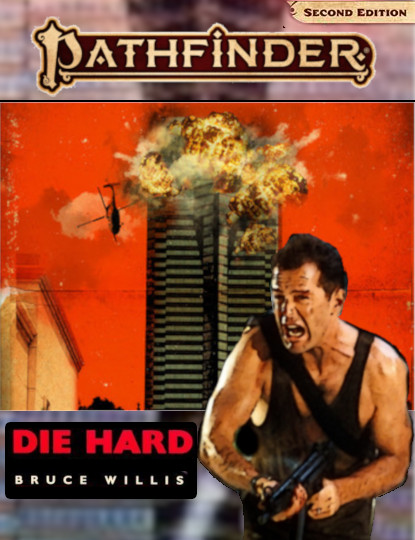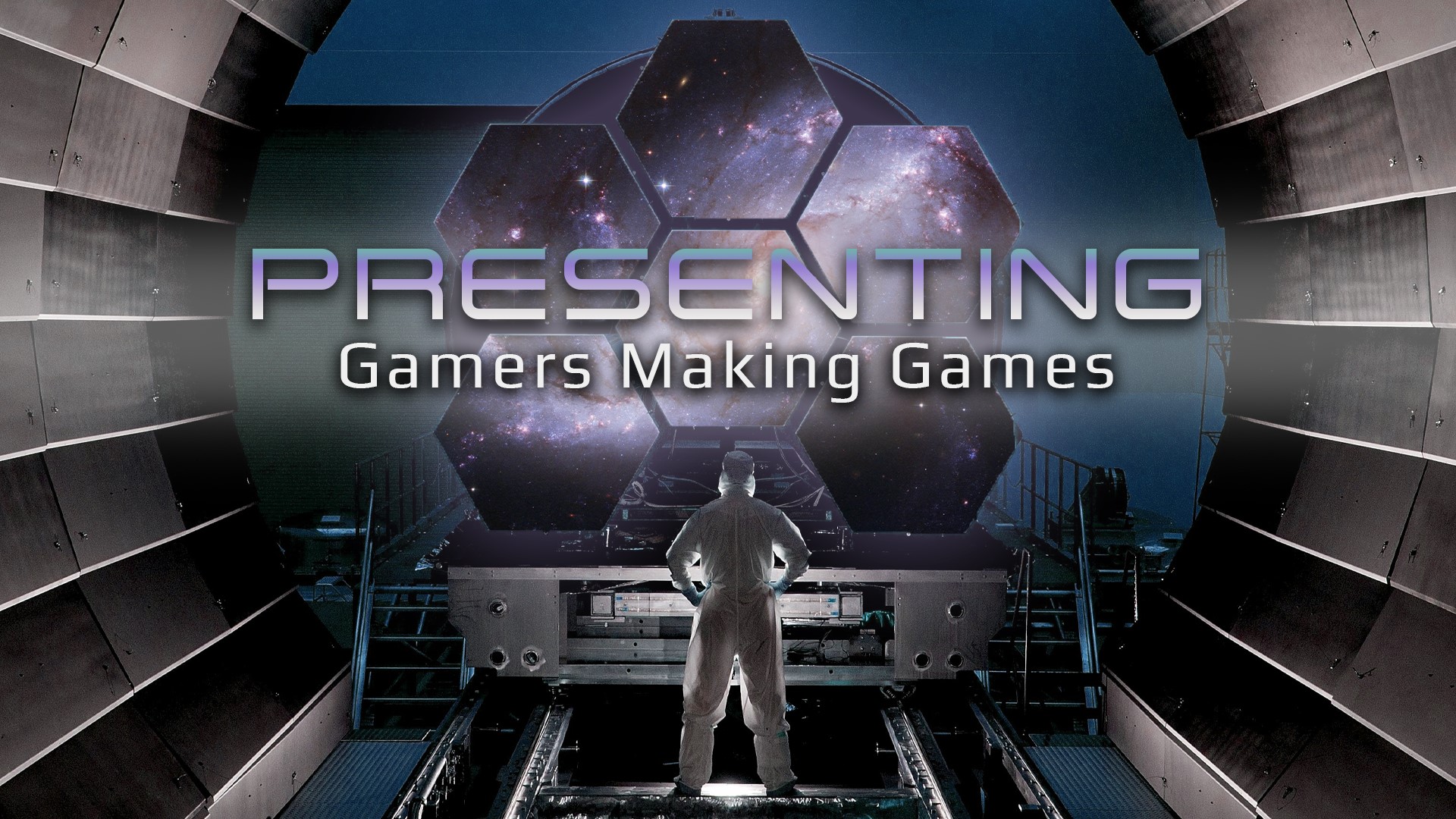For the longest time I scoffed at the idea that Die Hard is a Christmas movie, but a few years ago, after hearing it argued often, at length, and from a variety of angles, I realized that I don’t care about this nearly as much as some people.
Christmas movie or not, Die Hard remains one of my favourite movies. However, it wasn’t until I saw the Die Hard episode of the Netflix documentary series The Movies That Made us that I realized the movie’s potential as a template for low level adventures.
About First Level Adventures
As a reminder, one of my biggest issues with Pathfinder 1e is how much of a slog 1st level can be. By definition, it’s the point in the game where a player is least equipped to execute their ideas. However, because of how a few rules intersect* , 1e 1st level applied this logical starting point in a way that compromised fun.
One of 2e’s strengths is how much more fun 1st level is by default. Characters are more robust, the math is better applied, and there is more flexibility to what characters can do in a round by default. That means the challenges of a 1st level character are the logical ones, and expand beyond mechanics.
Squishy
Your max HP will never be lower, your saves will never be worse, there will never be more pages of the Bestiary that threaten you than when you are a 1st level character.
Limited
There is only so much a 1st level character can do that is specific to their character. A feat or two, a few spells, starting proficiencies. Don’t take this the wrong way, but when you are a 1st level character, you’re basic.
When a player talks about their character concept, rarely do they stop at 1st level. Even if your players aren’t all the types to outline their 20 level plans, they most likely all have an idea of what they’ll be able to do around 5th or 10th level. In a lot of ways, 1st level represents PCs when they are less than what they’re supposed to be.
Unfamiliar
You ever rewatch the first season of your favourite TV show? The characters seem off. The writers and actors are still trying to actualize concepts, seeing how elements actually work, and they don’t have touchstones to draw on yet.
Players bring new characters to the table in much the same way. The quote “no plan survives contact with the enemy” is often paraphrased for tabletop RPGs and applied to us, my fellow GMs, but it is as applicable to players and their character concepts surviving contact with the adventure. Unexpected rolls turning the dial of how competent a character is, waiting for opportunities to apply the character’s personality, and little things like how the other players pronounce the character’s name** or how easy the character’s voice is to maintain all impact how comfortable a player is with their new character during a 1st level adventure.
Running Die Hard
The other action movies of the 80s that came before Die Hard – Terminator, First Blood II, Predator, Robocop- were like the high level campaigns that you just concluded, and Die Hard was the start of the new campaign. Even if McClane and Dutch had the same character class, you could literally fit Bruce Willis inside a hollowed out Arnold Schwarzenegger at the time. And yet this story of “just another American who thinks he’s John Wayne” fighting about a dozen bad guys across the whole adventure is ranked on par with explosive movies where the fate of the world is on the line. How?
It Has Time to Bleed
In Predator, Jesse Ventura’s Blain famously replies to being told that he’s bleeding with “I ain’t got time to bleed.” Contrast that with Die Hard, where several minutes are dedicated to McClane pulling glass from his bloody feet and crying.
Die Hard makes McClane’s squishiness a feature. It takes the time to remind us that getting shot at is scary, stepping on glass hurts, that this character is experiencing the worst pain he’s ever experienced.
Like Die Hard, you can use your PCs’ vulnerability as part of your narrative.
“The goblin you just missed shows you up, hacking at your shin. Training swords and your teacher’s stories didn’t prepare you for how much this would actually hurt. For a second your loss of balance and the numbness in your leg makes you worried you lost your foot. The stickiness running through your leg hair and pooling in your sock may prove your foot’s still there, but it does nothing to reassure you.”
The Setting Is There To Help
In The Movies That Made Us, the fight choreographer talks about how he walked around the location they’d be shooting in before working out fight scenes. A dangling chain helped McClane overcome a larger foe, just like a window the villain Hans Grubber shot out when McClane was behind cover helped him hit a target he couldn’t target. In the end, McClane used a fire house as a rope to escape from an explosion.
We usually have an idea where our players want to take their PCs, and we can populate environments with interactive elements that grant temporary bonuses based on where they see they characters going.
“This chain just happens to be hanging at the perfect angle. If you spend an action to Interact with it, you treat your proficiency in Athletics as Expert for the purpose of grappling foes within 5 feet of it.”
You don’t need to assign rules to every environmental item, though. McClane used his wit to use the environment to his advantage and you can reward your players for doing the same. Instead of deciding that throwing an alchemical bomb with the splash trait at the glass window behind your NPC deals an additional 1d4 piercing damage as glass rains down on them, you can simply describe the glass window and see how the players want to use it. Maybe have an NPC or two Interact with the environment first as a tutorial moment telling the PCs this is an option.
It Gets To Know Its Characters
Before we get to know McClane, he arrives at a party where he doesn’t know anyone and no one knows him. This contextualizes those awkward “tell everyone about your character” moments that kick off campaigns by making that awkwardness something the characters feel rather than just the players.
Furthermore, Reginald VelJohnson’s Sgt. Powell character does wonders as an NPC getting a PC to explore their motivations and reactions. If a player is quietly contemplating their character, that’s a great opportunity for you to step in and say “How’s your character dealing with all this?” Again, it gives the player a chance to talk about their character in a way that’s relevant to the adventure, and it gives you, the other players, and maybe even that player insight into who their character is.
About The Sequels
There is no better proof that Die Hard is a great low level adventure than the Die Hard sequels. With each subsequent Die Hard, McClane’s power level increases and Bruce Willis’ interest in what’s happening decreases. No amount of McClane shrugging as he drives a plane through a helicopter compares to the visceral feeling of watching him take 10 minutes to remove the Clumsy condition. It also makes the yippee ki yay moment more meaningful.
*Size bonus to AC + Small creatures getting Dex bonuses + minimal restrictions on armour available to low level NPCs made ACs way higher than the system says they should be, starting HP wasn’t much higher than average weapon damage and was lower than the average critical hit, meaning combat was deadly, it’s essentially rocket tag without the spectacle of high level rockets.
**Xavier is a common name in Quebec! Or at least it is safe to assume Queberers know how it is pronounced.
Every two weeks, Ryan Costello uses his experience as a Game Master, infused with popular culture references, to share his thoughts on best GMing practices to help his fellow GMs. Often deconstructing conventional wisdom and oft repeated GMing advice, he reminds his fellow GMs that different players play the game in different ways, and for different reasons.
Speaking of Action
Don’t forget that we partnered with Boss Fight Studio to get you a discount on some of the best action figures out there! Enter offer code KNOWDIRECTION at check out before December 21st to get 10% off any in store item in the Boss Fight Shop. I recently used Boss Fight’s Vitruvian H.A.C.K.S in a blog post I wrote for Looking For Group to great effect.






